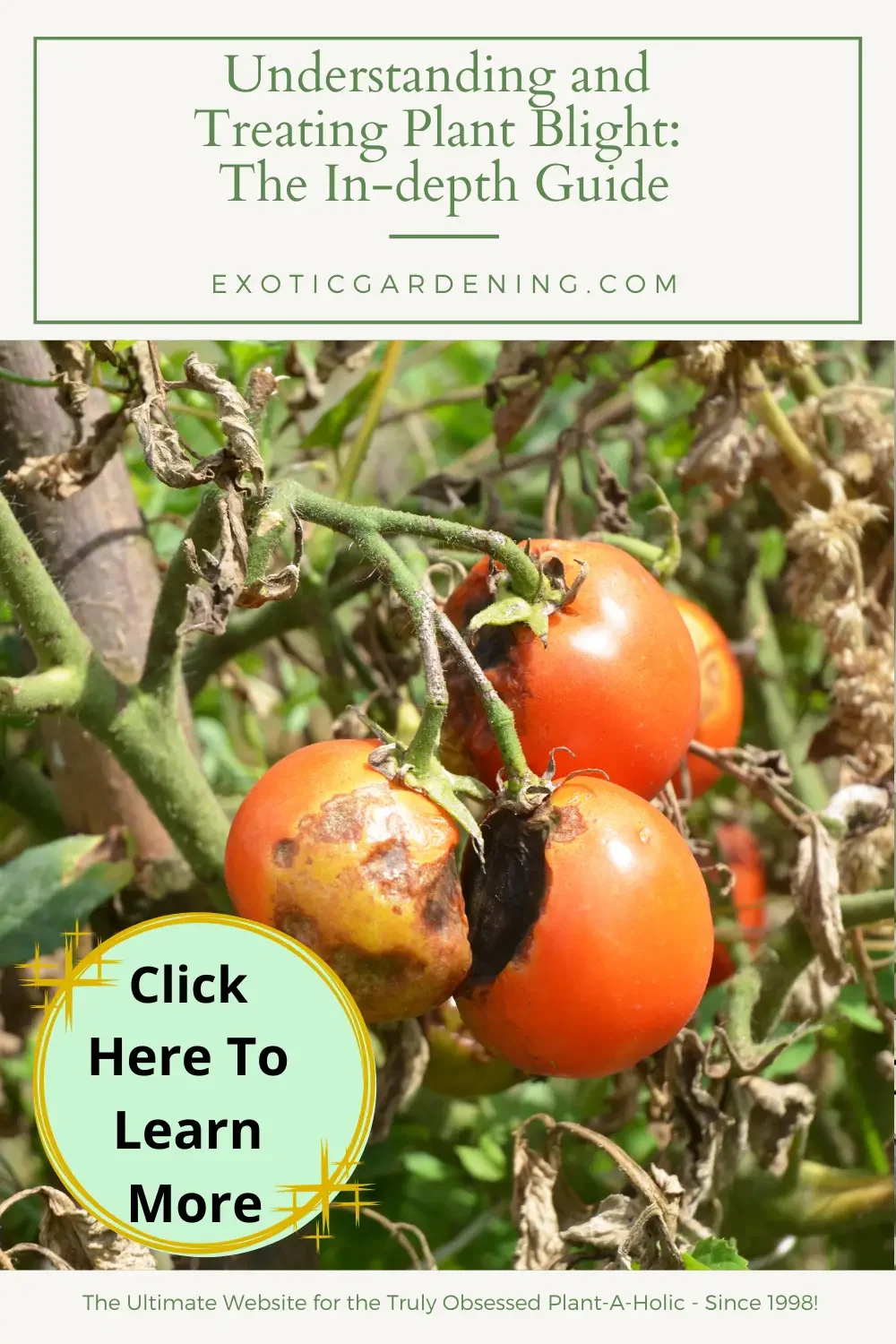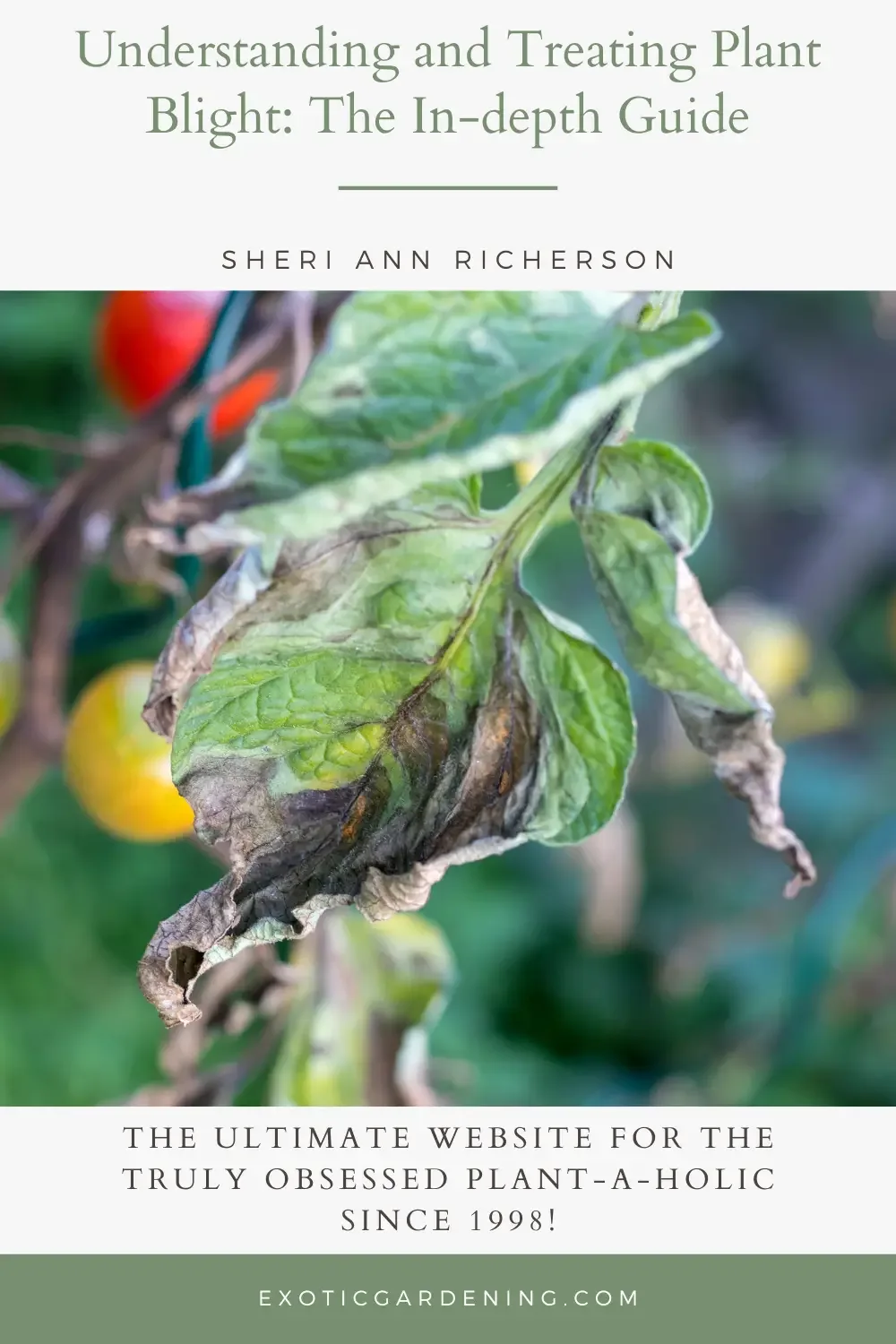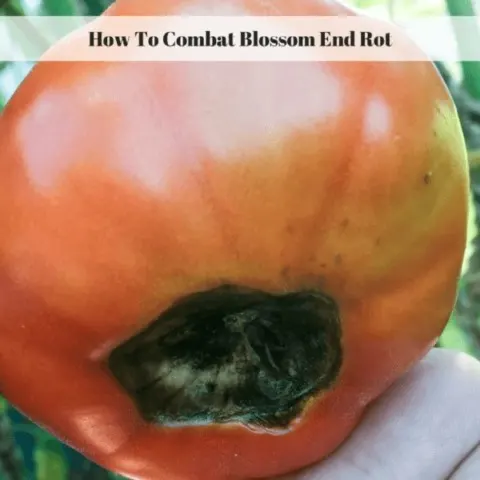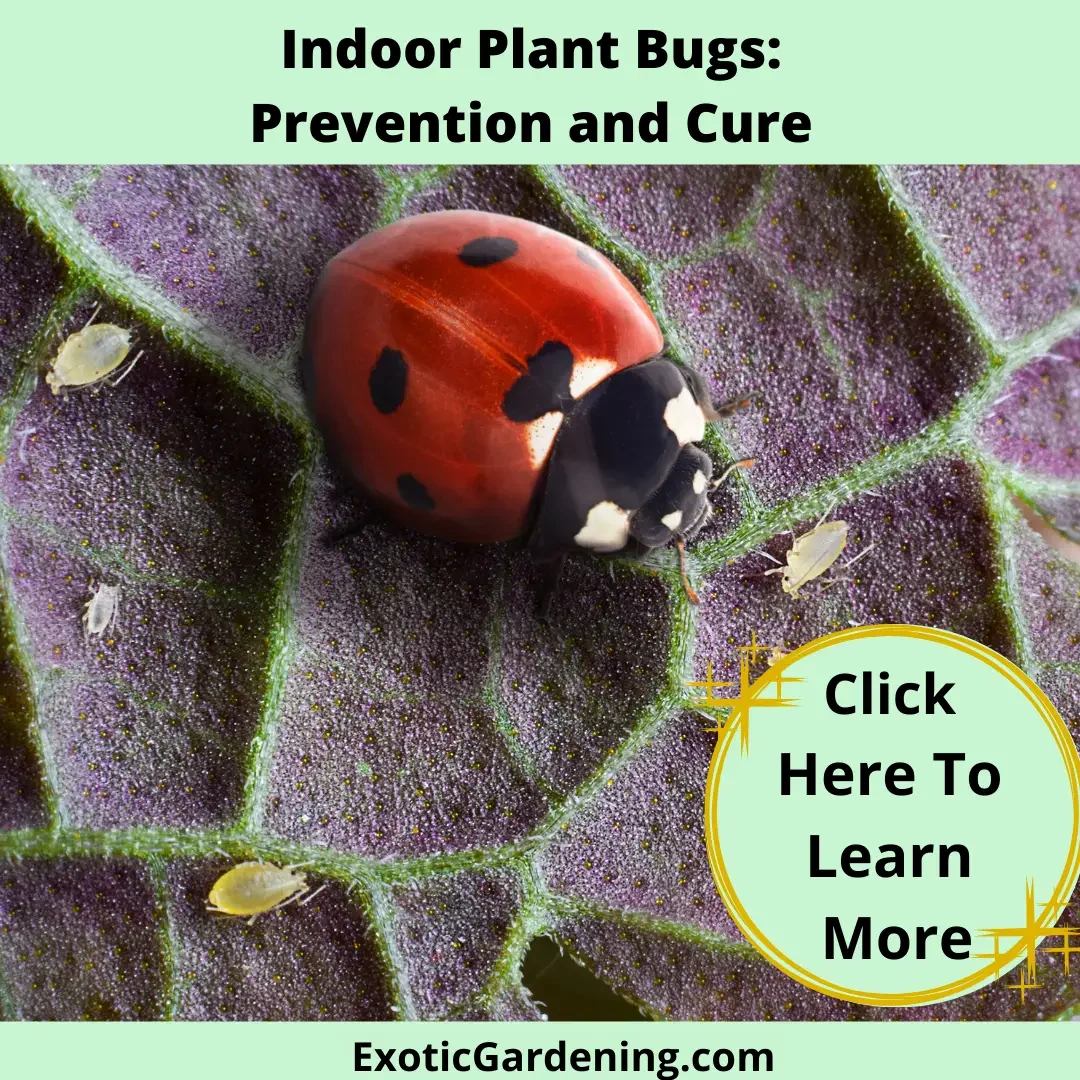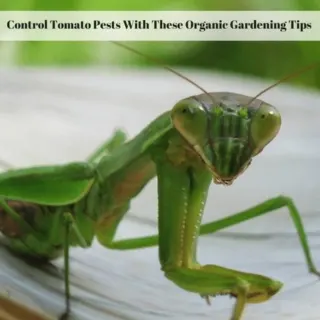Treating plant blight, especially through organic methods, is a topic that’s near and dear to my heart.
Plant blight, it’s a bit like Mother Nature’s curveball, isn’t it?
It throws a wrench into the gears of our gardens, homes and farms, and the culprits behind it are as diverse as a jungle full of exotic creatures.
But understanding this enigma, its causes, and its far-reaching consequences is a must for anyone who grows plants.
So, what exactly is plant blight?
Well, it’s a sneaky disease that can wreak havoc in our gardens, fields – and yes, even our houseplants.
It’s like a puzzle where the pieces are pathogens and environmental factors.
And trust me, the impact can be devastating.
But the good news is, we’re not helpless in the face of plant blight.
There are ways to tackle it, and I’m all about keeping it organic whenever possible.
It’s not just about nursing our plants back to health; it’s also about preventing these issues in the first place.
Let’s dive into this journey of understanding plant blight, its mysterious origins, the ripple effects it has, and most importantly, the natural treatments and prevention methods that can save our green friends from the brink.
An In-depth Examination of Plant Blight: Identifying its Most Distinctive Characteristics
Let’s take a closer look at Plant Blight – a term that might sound a bit technical, but it’s an important issue in the world of gardening and farming.
You see, Plant Blight is like a troublemaker that disrupts the natural balance of plant life, causing havoc in horticulture and agriculture.
In simple terms, it’s a disease that can make plants sick, and it’s caused by tiny organisms like bacteria and fungi.
When plants get this disease, they can quickly turn yellow and brown, and their leaves and stems may wither away.
Unlike some other plant diseases that creep in slowly, Plant Blight is like a sudden assault on our green friends.
It’s not just the bad microbes causing trouble; environmental factors like moisture and temperature changes can make the situation worse.
When plants are stressed due to these factors, their natural defenses can’t hold up against Plant Blight’s attack.
You might notice some distinct signs of Plant Blight, like rapid wilting and the appearance of burnt or necrotic spots on the plant.
For instance, it’s notorious for causing “Late Blight” in potatoes, and “Fire Blight” in apple and pear trees.
Understanding and identifying Plant Blight is the first step in dealing with it.
As we delve deeper into this issue and science keeps revealing more about it, we become better equipped to protect our plants and maintain a balanced ecosystem.
So, next time you see those brown spots on your plants, you’ll know it’s more than just a cosmetic issue; it’s a battle against Plant Blight.
This rampant and often debilitating affliction has been a subject of prolonged research in the realm of plant pathology.
Furthermore, take note that environmental factors considerably influence blight’s presence and progression.
Moisture and temperature fluctuations often exacerbate blight outbreaks, and plants under environmental stress may find their defense mechanisms ineffectual against a blight attack.
These factors, coupled with the pathogen’s unrelenting attack, make blight a formidable, pervasive threat to global flora.
Conclusively, Plant Blight is a detrimental, swift-moving disease brought about by various pathogenic organisms.
The blight’s identifiable characteristics span rapid browning, wilting, necrotic lesions, and death of plant tissues.
As understanding deepens and emergent technology continues to unveil the intricate dynamics of this disease, science empowers our ongoing battle against plant blight.
It is through such nuanced recognition and continued research that one cultivates the hope of abating this widespread pathogen, ensuring healthier plants, and by extension, a more balanced ecosystem.
The Causes of Plant Blight
Plant blight is a manifestation of intricate processes at microscopic levels in the ecosystem.
Key mechanisms contributing to the onset of blight are the pathogen-host interaction, the molecular weaponry of pathogens, and the plant defense responses.
Additionally, the environment plays a pivotal role, acting as a catalyst for the course of the disease’s progression.
The pathology of plant blight begins with the pathogen-host interaction.
Infectious organisms dock onto plant tissues using specialized structures, such as appressoria, haustoria, and pycnidia.
Notable is that pathogens of the genera Phytophthora and Botrytis produce zoospore structures capable of swimming towards chemotactic signals for targeted infection.
Upon successful attachment, pathogens secure their survival by deploying various pathogenicity factors.
These molecular weapons disrupt plant defense mechanisms and impede their ability to prohibit the disease’s path.
The Botrytis genus, causative agents of the notorious Grey Mold, releases toxins to kill plant cells, offering an abundant nutrient source for the pathogen to feed upon.
Simultaneously, the affected plants activate a defense system to counteract the invasion.
This includes the production of antimicrobial compounds, formation of physical barriers like lignified cell walls, and the onset of hypersensitive response – a drastic measure where plants willingly sacrifice infected cells to prevent the spread of the pathogen.
While these interactions dictate the microscopic world, environmental conditions set the stage for this drama to unfold.
Ideal conditions for blight are often cool, wet, or moist surroundings paired with stagnant air movements.
These attributes provide an optimal environment for pathogens to reproduce, disperse, and establish infection.
Furthermore, wounding or stress on plants due to other factors can increase susceptibility by compromising the plant’s immunity and providing entry points for pathogens.
A classic exemplar is the fatal Irish Potato Famine, instigated by Phytophthora infestans under the influence of consistently wet weather conditions.
Another example is the Fire Blight caused by Erwinia amylovora, which often spreads in orchards when springtime rain facilitates bacterial oozing and insect-mediated transmission.
Lastly, the genetic make-up of both plant hosts and pathogens significantly influence blight dynamics.
Mutations in disease resistance genes of crops or evolution of new, more virulent strains of pathogens can tip the balance towards the onset of blight.
In conclusion, the onset of plant blight is a fascinating yet intricate process involving a tripartite interaction between the plant host, infectious pathogens, and the environment under the veil of genetic complexities.
A clear and comprehensive understanding of these components can carve a pathway for effective and enduring solutions to manage this global menace to flora.
The Impact of Plant Blight
Building on the foundation laid out thus far, it’s important to delve further into the profound impact of plant blight on agriculture and the wider environment.
This involves considering economic damage, disruption to food supply, and ripple effects on ecosystems, all of which underline the severity of the threat posed by blight.
Starting with agriculture, blight poses a bane to farmers’ livelihoods all over the globe.
Crop yield and health are compromised due to blight, resulting in significant economic loss.
To put things into perspective, Phytophthora infestans, the pathogen responsible for potato blight, wreaks annual losses amounting to several billion dollars worldwide.
This particularly affects small-scale farmers and communities who directly depend on crop success, exacerbating poverty and food insecurity issues.
Furthermore, the economic fallout is amplified by the heavy costs associated with measures to control blight.
The continuous development of pathogen resistance makes it necessary to persistently refine and update control strategies, involving considerable investment in research, labor, and resources.
Blight diseases also disrupt our global food supply.
Robust, high-yielding crops like rice, potato, or tomato are often the hardest hit, with staple food crops accounting for about 60% of the global losses due to plant diseases.
These blights pose a genuine threat to global food security, particularly in developing nations where populations heavily rely on these staple crops for sustenance.
Turning to the environment, the consequences of plant blight extend beyond agricultural loss.
Infected plants can release pathogenic spores into the environment, leading to disease spread to unaffected areas.
This can result in altered plant community structures, impacting biodiversity and potentially destabilizing ecosystems.
Additionally, the widespread use of fungicides as a short-term solution to control blight can disrupt soil microbiomes.
The indiscriminate killing of fungi can upset the soil ecosystem balance, affecting nutrient cycling, organic matter decomposition, and the overall soil health.
In response to aggressive blight outbreaks, genetically resistant crops have been introduced.
However, the widespread planting of such crops presents a complex ecological dilemma.
Indeed, it might speed up the evolution of pathogens and inadvertently contribute to the emergence of new, more virulent forms of blight.
As clearly seen, blight diseases present a complex set of challenges to agriculture and the environment.
Shedding more light on how to mitigate and manage these diseases efficiently is not just a matter of crop health and economic stability, but an issue touching on global food security and ecological balance.
Each aspect, whether it pertains to agricultural sustainability, ecological protection, or socioeconomic equity, reinforces the essentiality of continuous, concerted research efforts dedicated to understanding and tackling plant blight.
Treatment and Prevention Methods for Plant Blight
Plant blight, with its manifold subtypes, presents a formidable and persistent challenge to the global agricultural community and biodiversity.
To effectively treat and prevent such a persistent threat, one must delve deeply into the mechanics of plant pathology, cultivar susceptibility, and pathogen virulence.
Treatment endeavors are multifaceted, designed to weaken the pathogen while strengthening the host’s defenses.
Traditionally, intervention begins with physically removing and destroying infected plant parts in an effort to impede spore production and dispersal.
Next, fungicidal sprays are commonly employed to further decimate pathogenic populations.
Examples of these include copper-based treatments and biofungicides, with the latter utilizing beneficial microbes to combat the unwelcome invaders.
Scientific advancements have expanded treatment methods to include targeted genetic modifications.
Techniques such as gene silencing, where harmful genes in the pathogen are “switched off,” weaken the intruders, assisting the plant’s natural defenses.
Another method, known as host-induced gene silencing (HIGS), disrupts pathogen function by causing the host plant to send RNA molecules that block the expression of the pathogen’s virulence genes.
Preventing blight remains the most economically and ecologically viable strategy.
Prevention fundamentally begins with selecting plant varieties that possess built-in resistance to blight-causing pathogens.
Best cultural practices, such as crop rotation, proper spacing, and maintaining a clean garden site, are cornerstone techniques that reduce pathogen populations and restrict their growth.
More advanced preventative measures include the use of disease prediction models, which forecast disease risk using factors such as pathogen biology data and weather forecasts.
Anticipatory breeding is a forward-thinking preventative measure that entails creating and cultivating plant varieties that are resilient against the blight strains of the future.
Advance breeding for disease resistance involves a suite of genetic techniques, for example, the integration of blight resistance genes derived from wild relatives of crop plants.
Ultimately, to effectively combat blight’s pervasive nature, we must adopt a comprehensive approach that unites traditional agricultural practices, advanced scientific techniques, and diligent monitoring.
A profound understanding of the intricacies of blight and its host-pathogen dynamics is key to both devising and refining effective treatment and preventative strategies.
With continued research and implementation of advanced technology, humanity stands poised to assert control over this insidious threat to our global flora and food security.
From an academic and scientific perspective, it is vital to underscore the dire need for education, research, and outreach efforts focused on the threats and pathogenesis of plant blight.
These efforts will be instrumental in safeguarding our agricultural future and ensuring our harmony with nature for the generations to come.
Battling Blight in Houseplants: Tips for a Healthy Indoor Garden
Houseplants bring life and vibrancy to our living spaces, but they’re not immune to plant blight.
Just like outdoor plants, indoor greenery can fall victim to these diseases.
So, what can you do to protect your houseplants and keep them thriving?
- Recognizing the Signs: The first step in dealing with blight in houseplants is to recognize the signs. Keep an eye out for yellowing leaves, brown spots, wilting, or any unusual changes in your plant’s appearance. These could be early indicators of a problem.
- Isolate the Affected Plant: If you suspect blight, it’s crucial to isolate the affected plant. This prevents the disease from spreading to your other indoor plants. Quarantine the sick plant until you can address the issue.
- Proper Watering: Overwatering can create a hospitable environment for blight. Ensure your houseplants are on a consistent watering schedule, and avoid letting them sit in water-filled saucers, which can lead to root rot.
- Good Air Circulation: Adequate airflow around your houseplants can help reduce the risk of blight. Position them so that air can circulate freely, and avoid overcrowding them.
- Regular Cleaning: Keep your indoor plants clean by gently wiping their leaves with a damp cloth. This removes dust and potential disease vectors.
- Natural Remedies: If you’re into organic and natural solutions, consider using neem oil or a garlic and pepper spray to combat blight. These options can help keep the disease at bay without resorting to chemicals.
- Prune Affected Areas: If you notice blight on your houseplant, carefully prune the affected leaves or areas. Make sure to sterilize your pruning tools to prevent spreading the disease.
- Quarantine New Additions: Before introducing a new houseplant into your indoor garden, keep it separate for a few weeks. This period allows you to monitor the plant for any potential blight or other issues.
- Seek Professional Help: If the blight persists or worsens despite your efforts, consider consulting a professional plant expert or your local nursery. They can provide guidance on more advanced treatments or suggest specific remedies tailored to the type of houseplant you’re dealing with.
Remember, houseplants can recover from blight with the right care and attention.
Don’t be discouraged if you face this challenge; it’s a part of the journey of being a plant parent.
By staying vigilant and taking these steps, you can help your indoor garden thrive and remain blight-free.
Preventing and Managing Blight in Your Vegetable Garden
As a home vegetable grower or gardener, you’re no stranger to the excitement of watching your plants thrive.
However, the unwelcome guest known as blight can show up unannounced.
Here’s how you can both prevent and manage blight in your garden.
Prevention Tips:
- Choose Resistant Varieties: Some plant varieties are naturally more resistant to blight. When planning your garden, opt for blight-resistant cultivars to give your plants a fighting chance.
- Crop Rotation: Rotate your crops each season to prevent blight from building up in the soil. Blight pathogens can linger in the ground, so changing where you plant your tomatoes, potatoes, and other susceptible plants can help.
- Proper Spacing: Give your plants room to breathe. Proper spacing allows for better air circulation, which can deter blight.
- Drip Irrigation: Water at the base of your plants rather than overhead. Wet foliage can promote the spread of blight. Drip irrigation or soaker hoses are excellent alternatives.
- Mulching: Apply mulch around the base of your plants to prevent soil splashing onto the leaves. Use organic mulch like straw or wood chips.
- Early Detection: Regularly inspect your plants for any signs of blight. If you spot a problem early, you can take action before it spreads.
Managing Blight-Stricken Plants:
- Isolate the Affected Plant: Just as with houseplants, isolate any garden plant showing blight symptoms. This prevents the disease from spreading.
- Pruning: Carefully prune away affected leaves and branches, making sure to disinfect your pruning tools between cuts.
- Do Not Compost: Whatever you do, do not compost blight-infected plant material. The disease can survive in compost and return to haunt your garden later. Dispose of infected material in your municipal waste collection.
- Fungicides: If the blight is severe, you may consider using organic fungicides. Be sure to follow the instructions carefully.
- Harvest Early: If you notice blight on your vegetable plants, consider harvesting the produce earlier than usual. While the plant may be struggling, you can still enjoy the fruits of your labor.
- Clean Your Garden Tools: After working with blight-infected plants, clean your tools thoroughly to avoid spreading the disease to healthy plants.
By following these prevention and management techniques, you can significantly reduce the impact of blight in your vegetable garden.
However, it’s crucial to keep in mind that blight can spread through the air, potentially affecting your neighbors’ gardens too.
So, in addition to safeguarding your own plants, your vigilance and prompt action can make a significant difference not only in the health and productivity of your garden but also in preventing the spread of blight to nearby gardens.
It’s a collective effort among gardeners to keep this troublesome disease at bay and ensure a healthier, blight-free growing environment for all.
Cultivating a Blight-Free Future: Strategies for Understanding, Control, and Prevention
Plant Blight, in all its complexity, serves as a stark reminder of the seriousness of this issue, and it underscores the urgent need for effective control and prevention methods.
Currently, Blight is a major threat to our environment, economy, and the well-being of individuals.
However, with knowledge as our ally and a focus on sustainable solutions, we can confront this challenge head-on.
Whether it’s adopting better practices in our home gardens or implementing biological and chemical controls in large-scale agriculture, we have the tools to tackle Blight.
A future where our plants remain healthy and productive without the shadow of Blight is possible, but it hinges on our informed, proactive, and sustainability-driven approach.
So, let’s roll up our sleeves and work together to protect our green companions and ensure a brighter, Blight-free tomorrow.

Plant Blight FAQ: Your Questions Answered
Q: What is plant blight, and how does it affect my garden?
A: Plant blight is a broad term for various plant diseases caused by microorganisms. It can lead to wilting, discoloration, and even plant death.
Q: How can I identify plant blight in my garden?
A: Look for symptoms like yellowing leaves, brown spots, or sudden wilting. These signs often indicate a blight problem.
Q: Is plant blight contagious between different types of plants?
A: Yes, it can be. Some blight pathogens can affect multiple plant species, so it’s essential to prevent its spread.
Q: What are the best prevention methods for plant blight?
A: Crop rotation, proper spacing, and good airflow are essential. Choosing blight-resistant plant varieties can also help.
Q: Can I treat plant blight organically?
A: Yes, natural remedies like neem oil or garlic and pepper sprays can be effective. Pruning affected areas and improving plant health can also help.
Q: What should I do if my plant gets blight?
A: Isolate the affected plant, prune away affected areas, and dispose of them properly (do not compost). Consider using organic fungicides.
Q: Are environmental factors like moisture and temperature relevant in preventing blight?
A: Yes, environmental conditions can impact blight. Moisture and temperature fluctuations can exacerbate outbreaks, making prevention crucial.
Q: Can blight spread through the air?
A: Yes, blight can spread through the air as fungal spores. Proper spacing and early detection can help reduce its airborne transmission.
Q: Is it possible to have a blight-free garden?
A: While complete prevention might be challenging, you can significantly reduce the impact of blight with vigilance and good gardening practices.
Q: How can I protect neighboring gardens from blight?
A: By taking prompt action to manage blight in your garden, you contribute to preventing its spread to neighboring gardens. It’s a collective effort.
Q: Is blight a widespread issue in home gardening?
A: Blight can affect both home gardens and commercial agriculture. It’s a common challenge for gardeners of all levels.
Q: Can plant blight be present in different parts of the world?
A: Yes, blight is a global issue, and its prevalence can vary depending on the region and local conditions.
Q: Are there organizations or resources that can provide guidance on managing blight?
A: Yes, agricultural extensions and gardening associations often offer resources and expert advice on blight prevention and treatment.
Q: Can blight affect fruit-bearing plants like tomatoes and peppers?
A: Yes, tomatoes and peppers are susceptible to blight. It’s essential to be vigilant with these crops.
Q: How often should I inspect my garden for signs of blight?
A: Regular inspections, at least once a week, can help detect blight early and take action promptly.
Q: Can blight affect ornamental plants as well?
A: Yes, ornamental plants can also be vulnerable to blight. Regular care and attention are crucial for their well-being.
Q: Are there any specific local factors that can influence the presence of blight in my area?
A: Local climate, soil conditions, and nearby vegetation can influence the likelihood of blight in your garden. Understanding these factors is beneficial.
Q: Can I recover my plants from blight, or are they lost once infected?
A: With timely and appropriate care, many plants can recover from blight. Early intervention is key to their survival.
Plant Pests And Diseases
How To Combat Blossom End Rot
Learn how to combat blossom end rot, which is a common problem many gardeners encounter when growing tomatoes.
Understanding and Treating Plant Blight: The In-depth Guide
Master treating plant blight with expert tips. Learn to protect your garden from this common threat. Essential insights inside.
Indoor Plant Bugs: Prevention and Cure
Achieve a pest-free indoor garden with effective strategies for indoor plant bugs prevention and cure. Nurture healthy plants effortlessly.
Treat Your Fruit Tree Pests To A Banana Smoothie
Battling fruit tree pests can be a nightmare, but this banana smoothie is an easy way to naturally deal with them.
Control Tomato Pests With These Organic Gardening Tips
These organic gardening tips for controlling pests on tomato plants help you identify, control and get rid of the problem organically.
A Great Garden Starts With Healthy Soil
Learn what healthy soil is and why it is essential when it comes to growing any type of plant from vegetables to flowers or even houseplants.

